The Legend of Zelda: Breath of the Wild Review
A great entry in the long running franchise and a solid Nintendo Switch launch title that's a joy to play
A review of The Legend of Zelda: Breath of the Wild feels slightly extraneous. If you still hadn’t relegated your Wii U into closet storage, or if you were one of the lucky few to score a launch day Nintendo Switch, are you really going to skip this game? This is the big one, the release that feels like what all Nintendo fans have been waiting for. Nintendo has been promising a new Zelda since the Wii U launched in 2013. They literally spent all of their 2016 E3 presence talking exclusively about this game. And as if the long wait wasn’t enough, there was the added pressure that Breath of the Wild would have to be the swan song for one Nintendo console and also be the must-buy hardware-selling title for another. That’s a lot of expectation to pile onto a game. So how does Breath of the Wild handle these pressures? Pretty well, actually.
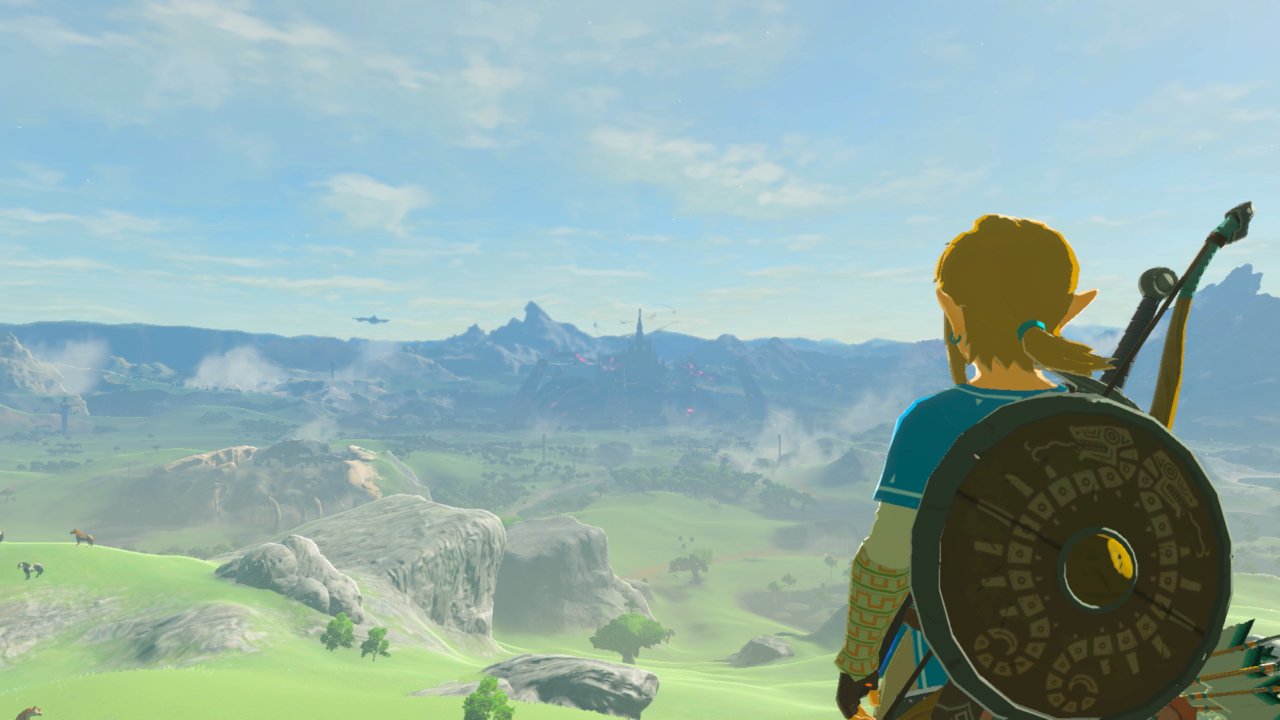
Breath of the Wild has its flaws, to be sure, but it’s a fascinating game to unpack in more ways than one. Zelda’s move to an open world turned a lot of heads when announced, but it has clearly paid off as the world of Hyrule has never been so grandiose in design and epic in scale. It’s hard to say how big Breath of the Wild actually is, but it feels enormous. What is most impressive is how much this feels like Zelda game. So little has been sacrificed in the open-world design that fans of the series and newcomers alike will be sure to love how many secrets, riddles, vistas, and monsters have been packed inside this environment. Zelda games have never been short, but this one packed on about ten additional hours of playtime compared to my experience with previous games in the series.
Breath of the Wild features a rather traditional Zelda narrative. Sing along if you know the words, people: Princess Zelda is locked away by the evil Ganon and Link must journey across the land of Hyrule, conquering dungeons, gathering skills, and making friends in order to save her. That’s not to say the formula is exactly identical. Instead of Link being an average boy thrust into a situation beyond his control, this Link has been destined to be Zelda’s protector seemingly since birth. However, after he and a team of champions failed to protect Hyrule one hundred years ago, Zelda sealed Link in a special chamber and used her powers from the Goddess Hylia to trap Ganon in Hyrule Castle. Now, Zelda is growing weak and you have awoken to right the wrongs of one hundred years ago.
The problem with this set up is that all the most interesting story bits, like the tales of Link and the champions coming together or Zelda wrestling with a destiny she must accept, are all delivered via cutscenes, sucking the tension out because we all know how the story ended one hundred years ago. To draw a comparison, imagine playing Final Fantasy XV and starting the game when Noctis returns after his celestial imprisonment, or Ocarina of Time after Link fails to stop Ganondorf as a child and returns as an adult. The reason the return of the hero works so well is that we’ve already had time to invest in their world, know what has been lost, and have an organic desire to restore it. Sure, you might bring your own baggage to Breath of the Wild, but there’s not an opportunity to see the Hyrule that Zelda and Link are fighting for; all we know is that the land is broken. This story structure also ruins the momentum of the game, because as you reach new areas and discover new weapons, everything has to grind to a halt so the game can dump some historical exposition and explain why you’re supposed to care about any of it. It’s not organic, it’s not creative, and it’s pretty bad storytelling.
Even worse, is that all of the clunky exposition is in service of a rote amnesia plot device that is employed to give you, the player, the same amount of information as Link; but this amnesia doesn’t hold any mysteries or sever the story in any way. As Link recovers his memories, the story largely plays out the way you’d expect. The voice acting is a little bit hit and miss, but there are a couple of scenes between Link and Zelda where the two have some real chemistry. The most damning evidence of the narrative’s weakness is that Nintendo doesn’t seem to really care if you find all the story bits, as they’re scattered across the game’s massive world and finding them can be a real challenge. Suffice it to say, the narrative never really works, and while the plots of Zelda games have never been their primary selling point, this one feels particularly underwhelming.
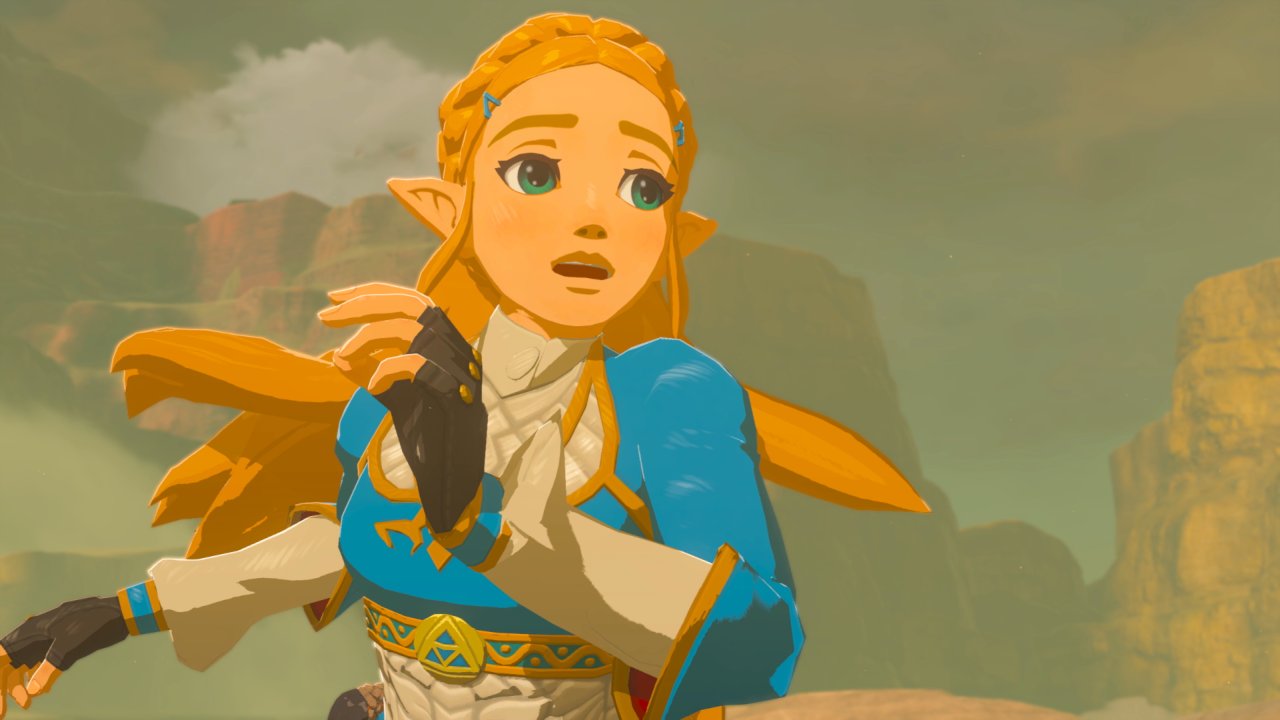
As you traverse Hyrule, you’ll come across towers you can scale and activate to reveal sections of the map. That might sound a little vanilla as far as open-world activities are concerned, but the rest of the game’s design is far more inventive. As opposed to the open-world collect-a-thons where you wander about, picking up trinkets lying around, Breath of the Wild hides almost everything from you. The shrine puzzles are numerous enough that you’re sure to find some, but others are hidden with clues given out by the characters throughout the world, and some are just tucked away in the map, meaning you’ll have to spot them with a keen eye.
Once you’ve found these shrines, you’ll have to figure out the puzzle inside to gain a spirit orb; after you’ve acquired four spirit orbs you can increase your health or stamina. The puzzles can range from physics-based to platforming, and most involve the use of four special abilities given at the beginning of the game. These abilities include remote bombs, freeze time for certain objects (Stasis), a magnetic pull that can manipulate metal objects (Magnesis), and creating pillars of ice out of water (Cryonis). Sometimes you’ll be using a pillar of ice to activate a switch, or moving a metal column with Magnesis to channel electricity from one part of the room to the other.
With a creative mind, you’ll find plenty of use for these powers out in the open-world. You can use Magnesis to drop a boulder on an enemy, Stasis to freeze enemies, Cryonis to build bridges and reach hard to get to areas, and the bombs are pretty effective against some of the weaker enemies. The powers also feel responsive to your controls, allowing them be used equally in combat or in difficult puzzles.
It feels like the numerous shrines were made to make up for the lack of dungeons in Breath of the Wild. There are four dungeons, one for each of the champions, but they’re pretty short compared to the more traditional Zelda dungeons one might expect. While a shrine often only has one puzzle, definitely no more than three, the dungeons usually have about five puzzles - one for each console that needs to be turned on to activate the Divine Beast the dungeon is located in. And, like most great Zelda games, the puzzles fit together pretty seamlessly, each puzzle opening up a new path for the player and new elements to help solve a different puzzle.
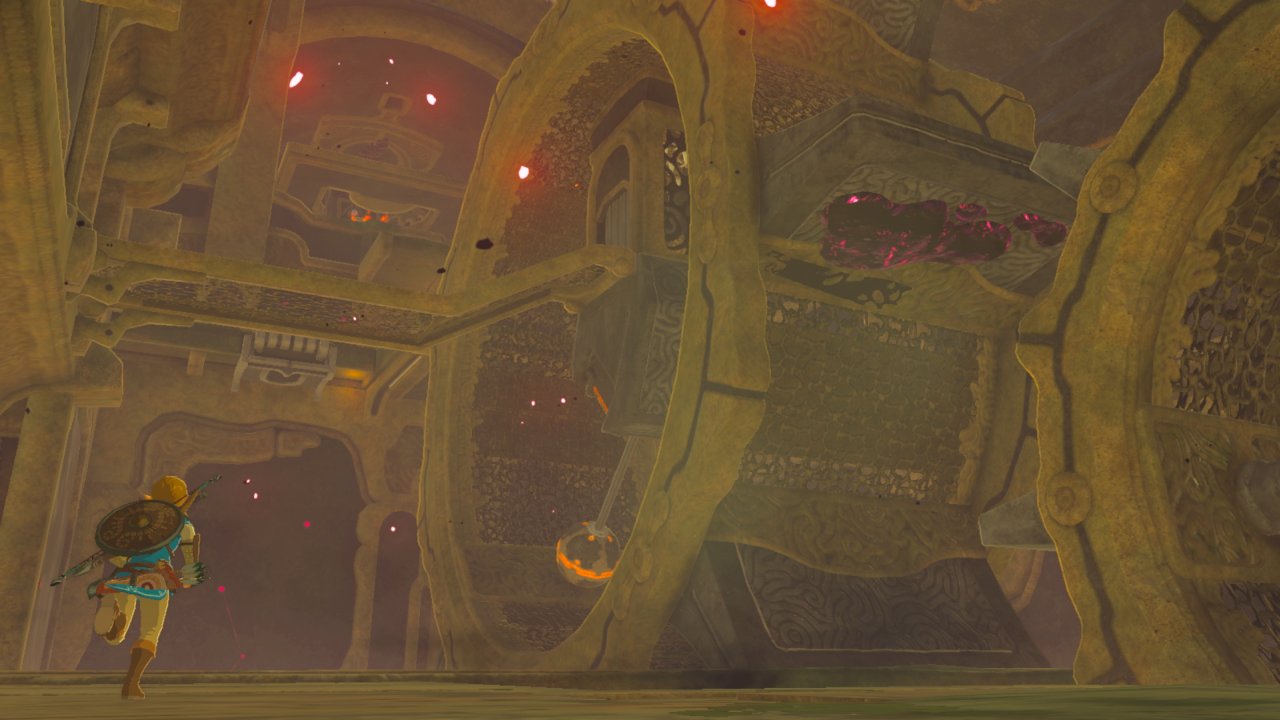
Each dungeon climaxes in a boss fight that relies heavily on timed dodging and the mastery of the elements. For instance, when you’re completing the Zora dungeon and you run into water, you’ll likely rely on Cryonis. After completing each dungeon, you’ll get a special ability that can be crucial as the enemies become more difficult. My favorite was a resurrection ability that triggers when you die and restores you to full health and then some. All of these special abilities, acquired through dungeons, have a pretty significant cool down time, but are very helpful.
With all the puzzles, it might sound like Breath of the Wild is lacking in combat, but that’s not the case at all. Sure, the dungeons and shrines are puzzle-based for the most part, but there are still plenty of bokoblins, lizalfos, and moblins populating the open world. There are also a few shrines where you’ll have to face a Guardian Scout or two. The combat is fun and requires a tactical approach - rushing into each fight won’t help your cause. Even in random encounters, I still found myself making sure I was using the right kind of weapons to attack enemies. Engaging with every enemy you see is a little futile, being as they reappear every time the blood moon rises (which happens every few days), but sometimes it’s worth taking on a camp of creatures as defeating them all yields a reward. If nothing else, you’ll have to fight them because you’ll need their gear. That’s right, the Master Sword has been lost and you’ll have to constantly pick up the tools of war from your fallen enemies, because weapons and shields degrade and eventually break apart with use.
You’ll also want to keep a supply of potions and food handy. Breath of the Wild leans heavily on a crafting system for healing and other bonuses like stamina boosts or element resistance. You’ll find vegetables and fruits out in the wild and can hunt for game, but you can also purchase spices, sugar, and salt at shops throughout the world. Combining individual items can create meals that can save you when you’re fighting. Crafting starts out a bit clunky, but I quickly got the hang of it and the animations are more fun than just sitting in a menu like most games.
One of my favorite things about Breath of the Wild is how you can also avoid combat. In fact, some enemies are too powerful to take on at first, so you’ll have to rely on your stealth or stamina to navigate a course around these foes. There’s quite a few options for traversing the world; you can capture and tame horses to increase your speed, increase your stamina so previously unclimbable cliffs are easily scaled, and you can parasail from the highest points in the game to pass over difficult spots. Toward the end of the game I found myself struggling with a few sub-bosses that I was able to skip entirely by traversing my own route to the final boss. While much of Breath of the Wild feels like familiar Zelda territory, I don’t think there’s been a game in the franchise that offered so much variety in how you go about exploring its vast landscape.
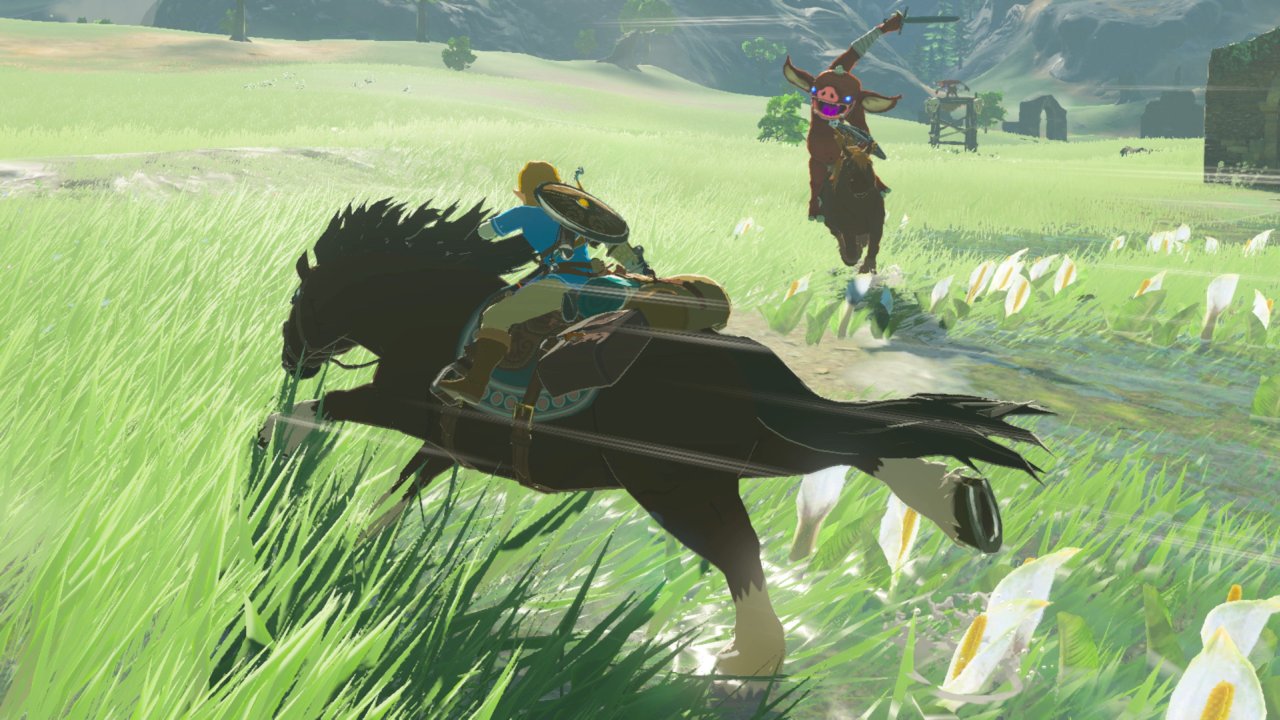
That’s not to say everything can be skipped by leaning into the world traversal - which is largely based on your stamina meter. Stamina is used to tame horses, climb, hold onto the parasail, and sprint and the more you improve it with the spirit orbs acquired in shrines, the easier it becomes to reach every inch of Hyrule. You can explore any way you want, but there clearly seemed to be an order Nintendo had in mind based on the difficulty of the enemies. Again, many enemies can be skipped, but it’s hard to imagine facing certain bosses without building up your heart containers or scaling certain towers before you’ve improved your stamina.
That landscape is what makes Breath of the Wild something special. It’s a game that begs to be experienced with pauses to make camp out in the wilderness, or to have strange ruins catch your eye and distract you from the main quests. I loved finding the safe havens of Gorons, Zoras, Gerudos, and Rito throughout the world and learning about the traditional Zelda races, but after every dungeon was complete I always found myself excited to be back on the road, wandering the kingdom again, scaling towers to unlock a little bit more of the map and see what lay beyond the next horizon. I loved exploring the world so much, that I even found where it ends. Most of Hyrule is water-locked or blocked off by unscalable cliffs, but one section of the Gerudo Desert suggests that you turn back as you’ve wandered beyond the intended edge of the environment. Nintendo built a pretty magical world and as the journey reached its conclusion, I found myself recounting the places I visited with a sense of longing.
There’s so much to do in Breath of the Wild it sometimes means you’ll be spending some time going in and out menus, but usually the game flows smoothly transitioning from exploration and platforming to combat and item-use. It’s impressive enough that Breath of the Wild has so many elements, but the fact they all work so well together is really something. The crafting, the exploration, the combat, and all other gameplay elements come together to form a great final product. Gliding through the air to fire that perfect shot feels as good as scaling your way up a mountain, which feels as good as crafting a new recipe.
If there’s one element where Breath of the Wild is weak with its controls, it is the combat. Generally, it all works well. Again, it’s impressive how quickly you can go from viewing a vista to taking on some bokoblins, and the way different melee weapons have different weight and tactical use is really great. However, since all weapons have limited durability they have a tendency to break often, and equipping new weapons can be a real annoyance. Trying to be aware of enemies, while navigating the D-pad, possibly holding a trigger button, and then scrolling a menu takes a lot of time to master. An even bigger annoyance is when you pull out your bow to get a few shots at an enemy, and then can’t backflip until you’ve re-equipped your melee weapon. There were also times when I would be trying to avoid an enemy and Link would get stuck climbing something instead of running.
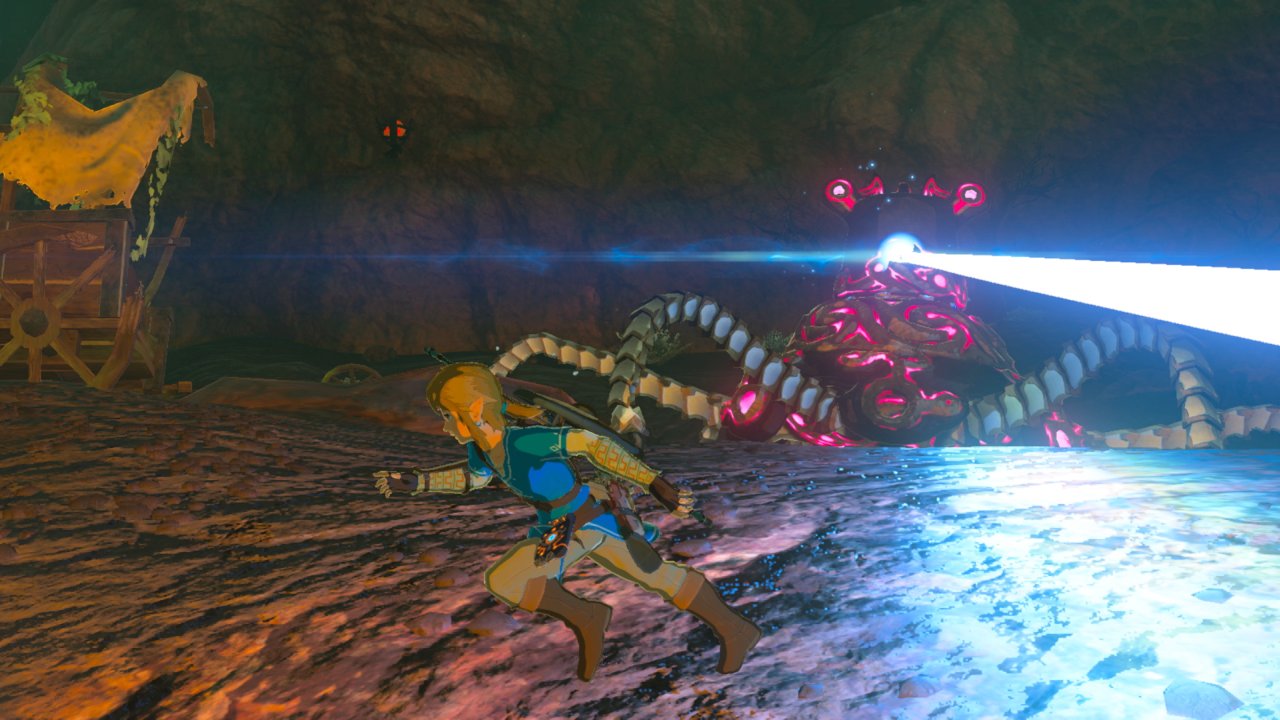
There are a few finicky controls examples in Breath of the Wild, but largely I’d give them a pass because I don’t think it’s incumbent upon the game to make itself easier for anyone. I liked a lot of the challenges I ran into; certain bosses and puzzles really gave me some trouble and that feels great. And like I said, a number of these challenges can be skipped without severe consequences. Still, with the Switch’s wireless signal so easily blocked, the hardware can betray some of these more testing moments. I had to stand up during every boss battle to make sure that nothing blocked my controller’s signal and gave the enemy a cheap shot.
Creating a game for the Nintendo Switch (and Wii U) means that the game lacks the console power for photorealism, instead opting for a cell-shaded aesthetic, but it does so effectively, creating beautiful vistas and enchanting visuals that capture the eye and the imagination. Whether that means watching the setting sun in the distance or running through electric fury of a lightning storm, Breath of the Wild is always visually engaging. Equally impressive is how different weather requires different strategies. A rain storm can affect climbing, and using metal weapons when there’s lightning can be fatal. In the desert, the terrain can be scorching hot during the day and freezing cold at night. These little touches make Breath of the Wild feel alive and filled with more dangers than just enemies.
The UI has been shrunk from previous games in the franchise to make sure the scope of the world is never lost, and neither is its beauty. Underscoring this gorgeous world is a score that feels non-traditional for fantasy games and especially Zelda. Instead of sweeping themes that soar with symphonic grandeur, the game often opts for quiet piano that softly accents the images on screen. There are sometimes I wished the game would cut loose and give me the epic score as I rode through Hyrule Field - and there are a few powerful moments of music - but Breath of the Wild is confident enough to only tease the familiar Zelda themes, keeping them largely understated or using them as counter melodies.
It's also a bummer when these beautiful visuals and audio were met by occasional technical hiccups that took me out of the moment. Playing on the Nintendo Switch, I found the game hit a few framerate snares. It particularly seemed to have trouble when I’d send of a giant moblin rolling downhill and the ragdoll physics engine had to be engaged. I also hit a couple glitches toward the end. One was a weird autosave glitch that happened halfway through a battle. The problem was that it saved my depleted resources, but restored the boss back to full health. Another caused the final boss to be invisible the first time I fought him. Keep in mind, in the fifty hours I spent with Zelda, these were rare moments, but they still deserved to be called out.
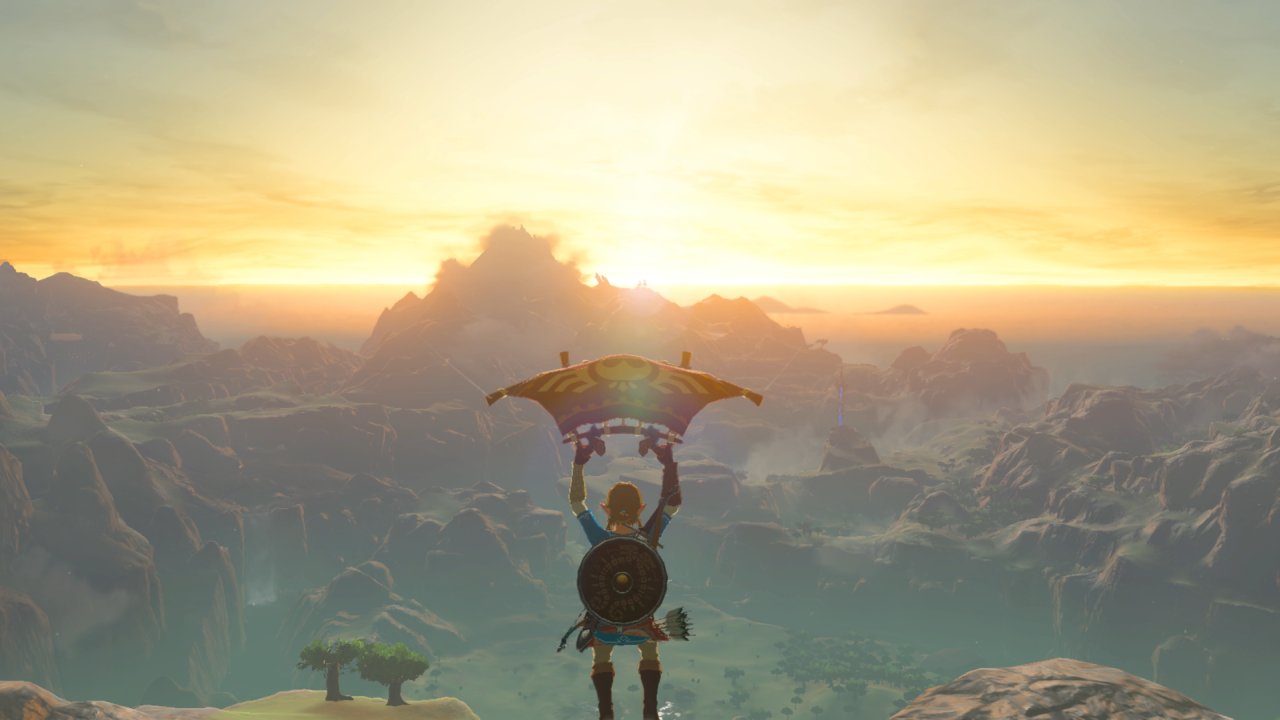
The Legend of Zelda: Breath of the Wild was likely a must-own game for many fans before they read any reviews, and even before a clip was shown or any gameplay revealed. The good news is that even if this was on your list since the initial announcement years ago, you got a pretty great game out of the deal. I don’t know if it’s necessarily worth exclusively buying a Nintendo Switch for, but those who do snap up Nintendo’s newest hardware can know the console already has at least one wonderful experience waiting for them. The story might be relatively forgettable and I had a few technical issues, but most of my time spent with this Zelda was a delight. It’s nice to see that even after all these years, Hyrule still has plenty of magic left in it.
 Comments
Comments

















